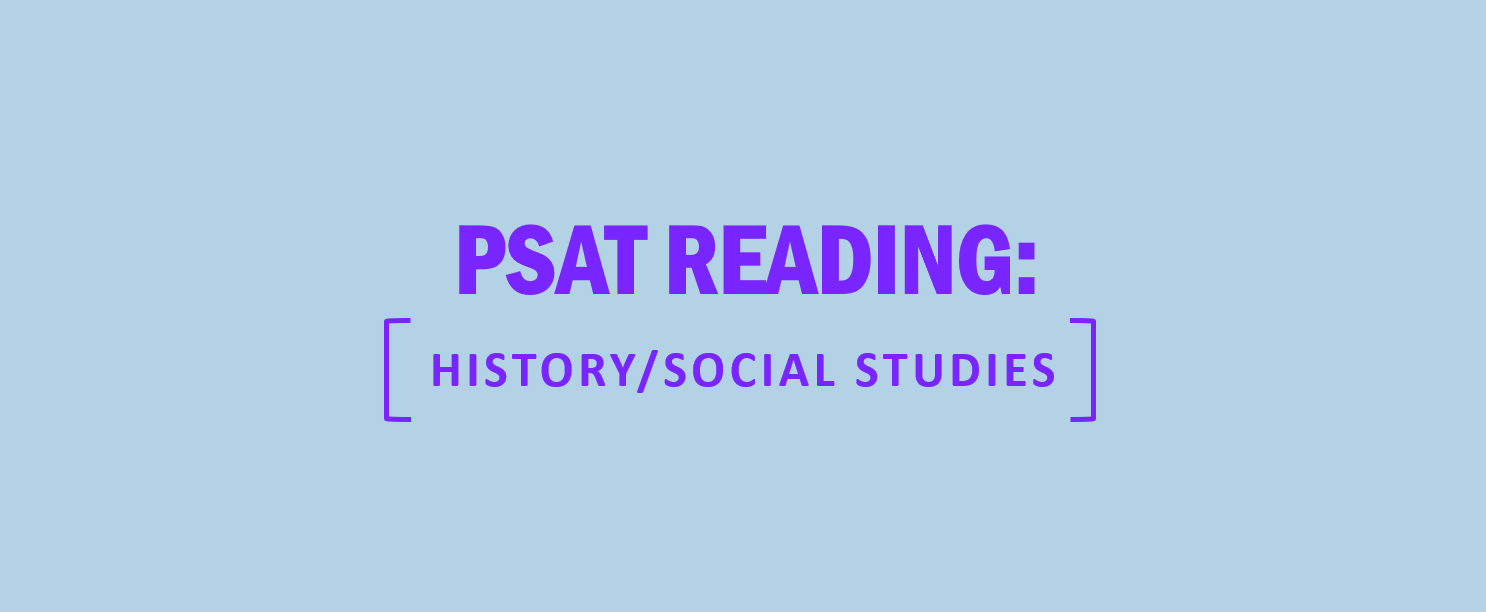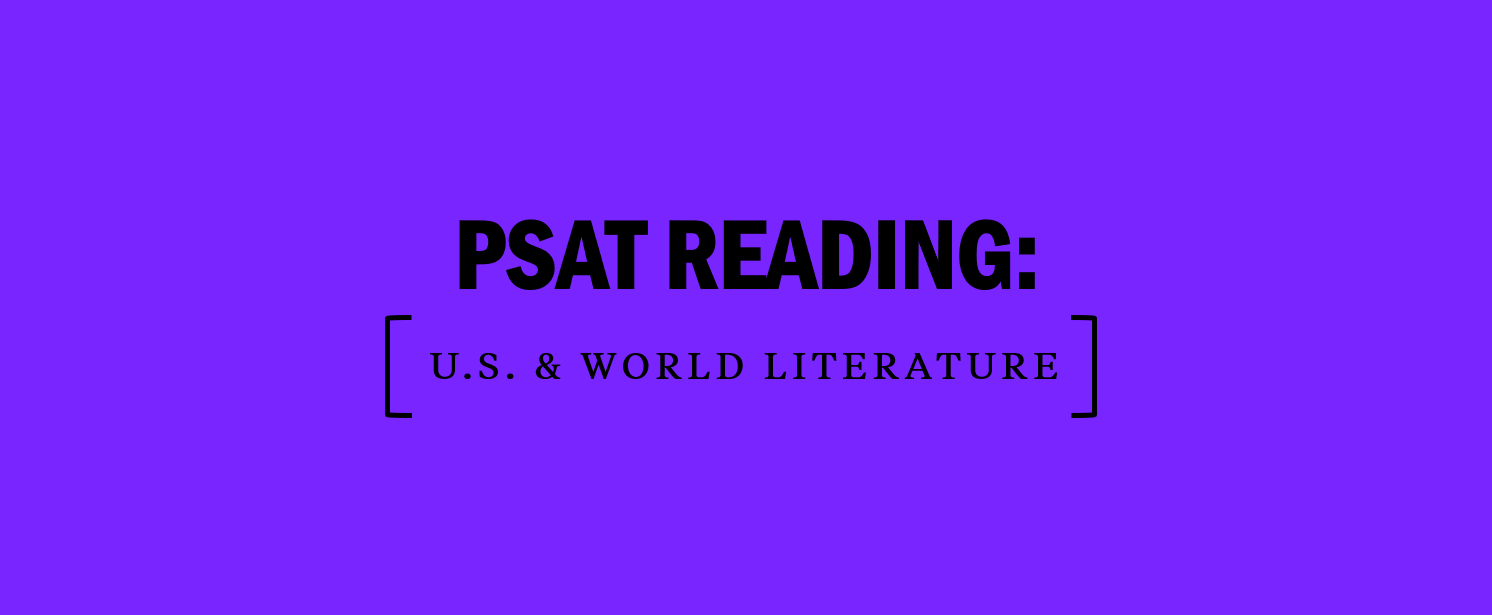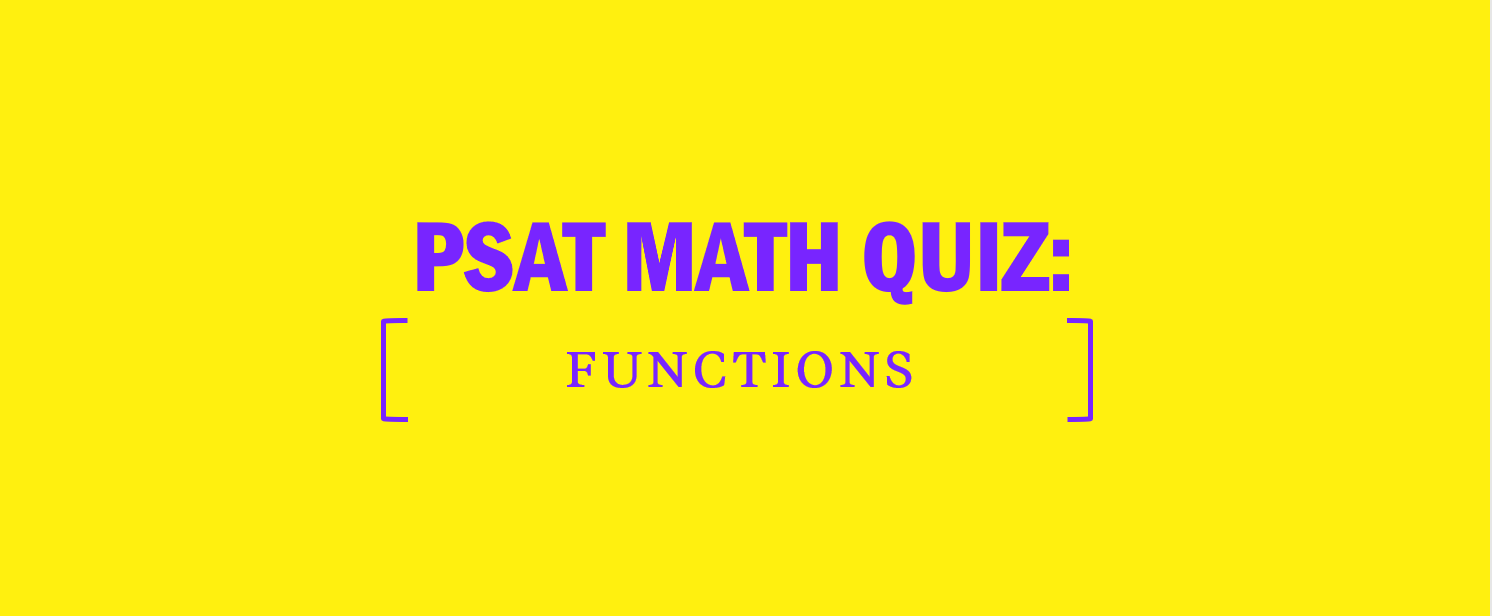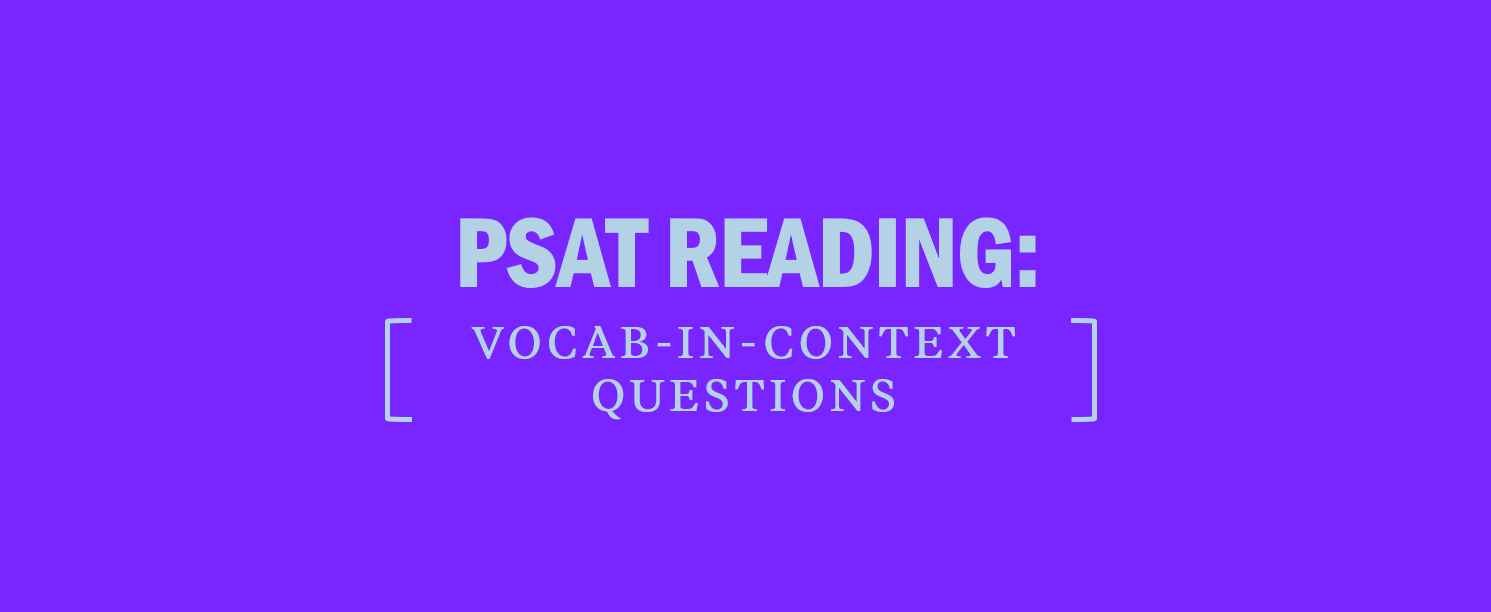PSAT Reading: History/Social Studies Passages
The History/Social Studies portion of the PSAT Reading Test will consist of either two single History/Social Studies passages or one single History/Social Studies passage and one History/Social Studies paired-passage set. History/Social Studies passages are different from other passage types because:
- The passage will have a clearly stated topic, a well-defined scope, and a specific purpose.
- There will be at least one primary source passage that uses antiquated language.
Because History/Social Studies passages can be densely written, you should:
Resist the temptation to reread large portions of the passage. Your Passage Map can help you predict and answer questions correctly without having to dive completely back into the text. Doing so will save you time on Test Day!
Let’s look at the following example of an abbreviated History/Social Studies passage and question set. After the mapped passage, the left column contains questions similar to those you’ll see on the PSAT Reading Test on Test Day. The column on the right features the strategic thinking a test expert employs when approaching the passage and questions presented. Note how a test expert can quickly condense the entire passage into a few words and use his or her Passage Map to ask questions that build a prediction for the correct answer.
Sample PSAT Reading Question: History/Social Studies
Step #1: Read Actively
¶1: author believes rights will come (purpose)
¶1 cont.: change will begin soon, when S doesn’t feel forced
Question #1 Explained
Step 2: Examine the question stem
- What are the keywords in the question stem? There are none; it’s about the passage as a whole.
Step 3: Predict and answer
- Look at the Passage Map notes. What is the author’s purpose for writing this passage? Change will happen.
Question #2 Explained
Step 2: Examine the question stem
- What clues are in the question stem? The quoted phrase and line number.
Step 3: Predict and answer
- According to the passage and your notes, how does the South feel? Forced.
- So, when will “the political rights” come about? When the South stops feeling forced.
- What answer choice does this match? Choice (D)
Tip
PSAT passages often use primary source material, which means the language can be antiquated to modern readers. In some instances, we have modified this language. Don’t let that distract you from making a Passage Map that focuses on the central ideas.
PSAT Reading Practice Questions Explained
For practice question #1, use your Passage Map to identify the author’s topic, scope, and purpose. The author’s topic is his belief, the scope is gaining rights, and the purpose is to express hope for change. Choice (B) is correct.
For practice question #2, go to the cited lines and use your Passage Map to determine how those lines relate to the passage as a whole. Predict that these rights won’t be given due to force and won’t happen until the South doesn’t feel forced. Choice (D) matches your prediction.
Previous: PSAT Reading: U.S./World Literature Passages
Next: PSAT Reading: Science Passages







